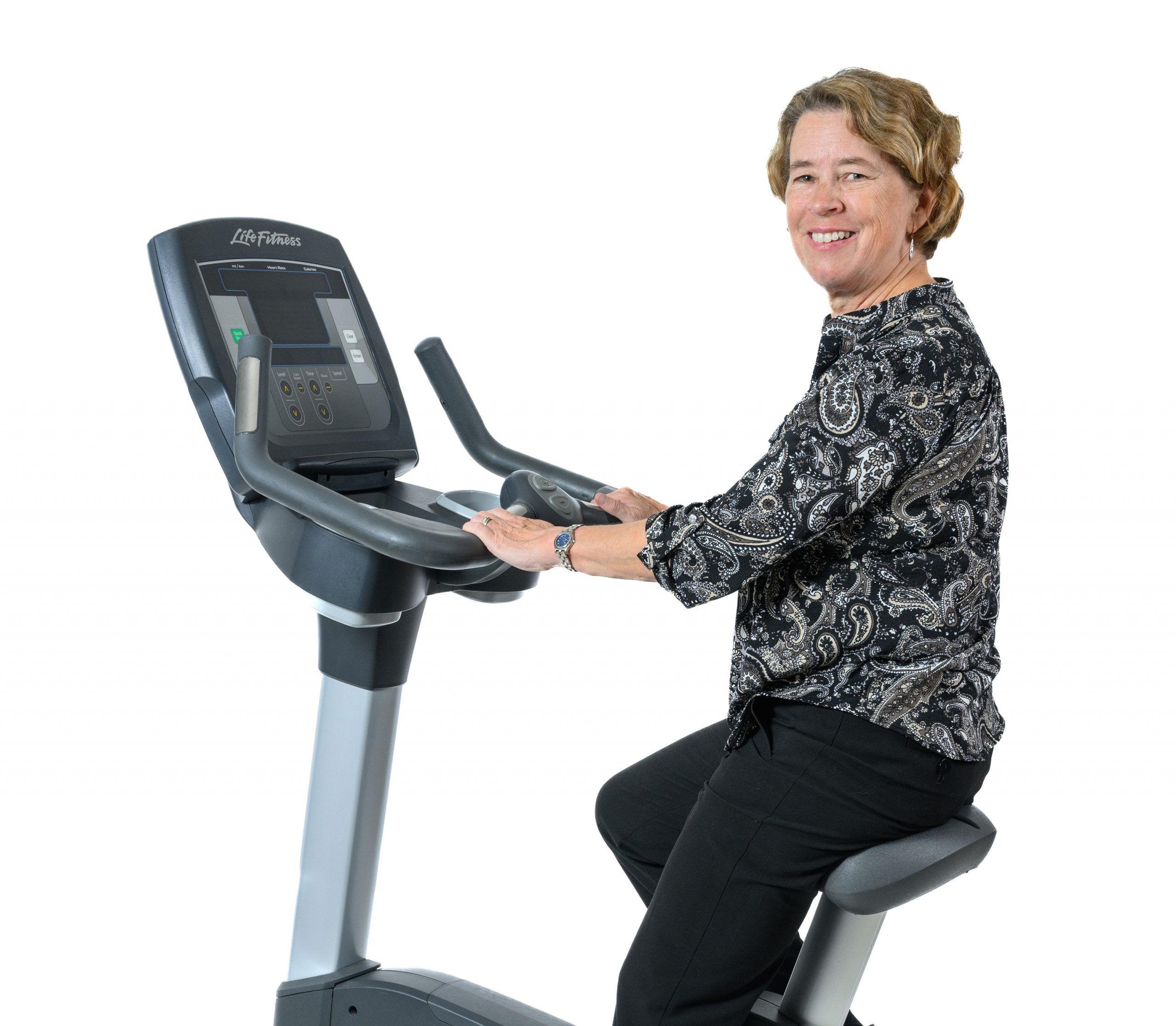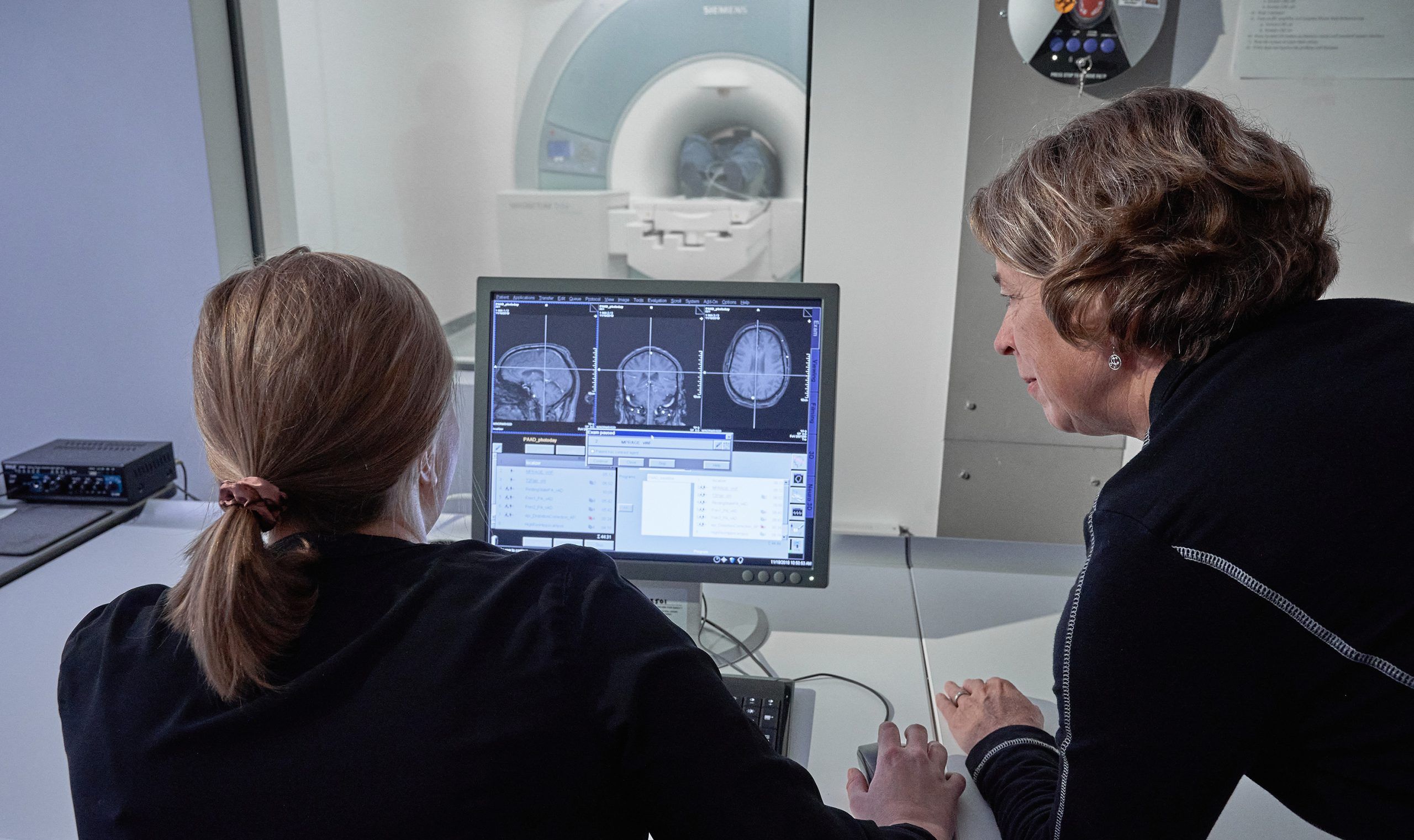Spring 2022
MENTAL ACTIVITY
2021 Senior Research Excellence Award
Dr. Jennifer Etnier received UNCG’s 2021 Senior Research Excellence Award for her scholarship on physical activity and cognition.
Etnier is a fellow of the National Academy of Kinesiology and the American College of Sports Medicine and is known internationally as an expert on exercise’s impact on the aging brain. She has over 90 peer-reviewed articles, over 11,500 citations, and over $6 million in funding, including a current NIH R01 grant.
The Julia Taylor Morton Distinguished Professor also holds five teaching and mentorship awards, and off campus she is a youth sports advocate who was named Greensboro United Soccer Association’s 2017 Coach of the Year.
Moving into kinesiology
“I started out as a college athlete pursuing a degree in computer science and math. But I realized I didn’t want to spend all day on a computer. I liked and wanted to interact with people, so I did a master’s in sports psychology, planning to work with elite athletes. Then, as I did my PhD work, I realized my interest was really in the broader benefits of physical activity for health.
“The irony is, as a researcher, I spend all day on a computer now. But there’s nothing more fun than finding an interesting question and figuring out how to answer it.”
Exercise and cognition
“My graduate school work kickstarted my exploration of exercise and cognition. I started recognizing older adults in my family had differences in quality of life relative to cognitive capacity, and that triggered my interest in exercise as a way to protect cognitive performance.
“My lab has found that a single session of moderate intensity aerobic exercise for 20 to 30 minutes improves memory – both in the short term and after a 24-hour delay.
“Even better, if you participate in physical activity on a regular basis – 150 minutes of moderate intensity exercise a week – cognitive benefits accumulate. Formerly sedentary people saw benefits in our studies at the four-month mark and more benefits at the eight-month mark.”
Commitment to a cause
“Our current NIH clinical trial explores the potential of physical activity to delay or prevent Alzheimer’s disease. Participants, who all have family histories of Alzheimer’s, make a year-long commitment to be in our study.
“One thing I’ve learned is how committed research volunteers can be. We had someone in Florida join the study – he’s driving to Greensboro three times a year to participate. It’s really special and makes research particularly rewarding. We’re at the halfway mark now – we’re looking for 100 more volunteers.”
APOE genotype
“The APOE genotype is the strongest susceptibility gene for Alzheimer’s disease. With an allele from each biological parent, you could have 0, 1, or 2 copies of APOE – which gives you lowest risk, heightened risk, or a dramatically increased risk for Alzheimer’s.
“Our PAAD study demonstrated physical activity improves memory for aging adults, and the PAAD2 study will verify that with a larger group. But our major question is whether exercise will cognitively protect people who have genetic risk for Alzheimer’s, and whether genetic risk changes the impact.
“In addition to cognitive testing, we’re doing MRI imaging. Individuals with the highest genetic risk for Alzheimer’s have structural changes in their brains as early as their 30s. Our study looks at individuals from 40 to 65 years old. If we can capture brain changes that are mitigated by exercise, that would be really powerful data.
“Any findings that exercise can protect people at risk for Alzheimer’s would be great. There is currently no cure for Alzheimer’s, and it’s a leading cause of death in America. If we can delay onset by even five years, that’s five more years with better quality of life – five more years with your children and grandchildren.”
Across the lifespan
“We’ve found impacts across the lifespan.
“For example, exercise during the school day produces improvements in memory, which are still evident 24 hours later. This suggests physical activity during school may maximize the learning experience. Even when kids exercised at a high intensity – when people might expect them to tire and experience negative impacts – we still saw benefits.
“The implication for students is to exercise before you study, to improve your performance on a test the next day.
“It’s fascinating that exercise can enhance children’s cognitive development and help healthy young adults perform at top capacity.”
Coach at heart
“The mentoring experience for me with students and postdocs is one of the biggest joys of being a faculty member. Seeing students develop into independent scholars is just a remarkable transition.
“I love to interact with people and help them move towards their potential. I also get that through coaching soccer.
“We know physical activity is so important for our physical and mental health. Youth sport can help people fall in love with being physically active. The two books I wrote on youth sports psychology focus on that – helping young athletes achieve their potential and helping coaches ensure kids have a great experience and come back the next day, either to that sport or to another sport they fall in love with. And then they hopefully become lifelong physically active individuals.”

Spring 2022
MENTAL ACTIVITY
2021 Senior Research Excellence Award
Dr. Jennifer Etnier received UNCG’s 2021 Senior Research Excellence Award for her scholarship on physical activity and cognition. Etnier is a fellow of the National Academy of Kinesiology and the American College of Sports Medicine and is known internationally as an expert on exercise’s impact on the aging brain.
She has over 90 peer-reviewed articles, over 11,500 citations, and over $6 million in funding, including a current NIH R01 grant. The Julia Taylor Morton Distinguished Professor also holds five teaching and mentorship awards, and off campus she is a youth sports advocate who was named Greensboro United Soccer Association’s 2017 Coach of the Year.
Moving into kinesiology
“I started out as a college athlete pursuing a degree in computer science and math. But I realized I didn’t want to spend all day on a computer. I liked and wanted to interact with people, so I did a master’s in sports psychology, planning to work with elite athletes. Then, as I did my PhD work, I realized my interest was really in the broader benefits of physical activity for health.
“The irony is, as a researcher, I spend all day on a computer now. But there’s nothing more fun than finding an interesting question and figuring out how to answer it.”
Exercise and cognition
“My graduate school work kickstarted my exploration of exercise and cognition. I started recognizing older adults in my family had differences in quality of life relative to cognitive capacity, and that triggered my interest in exercise as a way to protect cognitive performance.
“My lab has found that a single session of moderate intensity aerobic exercise for 20 to 30 minutes improves memory – both in the short term and after a 24-hour delay.
“Even better, if you participate in physical activity on a regular basis – 150 minutes of moderate intensity exercise a week – cognitive benefits accumulate. Formerly sedentary people saw benefits in our studies at the four-month mark and more benefits at the eight-month mark.”
Commitment to a cause
“Our current NIH clinical trial explores the potential of physical activity to delay or prevent Alzheimer’s disease. Participants, who all have family histories of Alzheimer’s, make a year-long commitment to be in our study.
“One thing I’ve learned is how committed research volunteers can be. We had someone in Florida join the study – he’s driving to Greensboro three times a year to participate. It’s really special and makes research particularly rewarding. We’re at the halfway mark now – we’re looking for 100 more volunteers.”

APOE genotype
“The APOE genotype is the strongest susceptibility gene for Alzheimer’s disease. With an allele from each biological parent, you could have 0, 1, or 2 copies of APOE – which gives you lowest risk, heightened risk, or a dramatically increased risk for Alzheimer’s.
“Our PAAD study demonstrated physical activity improves memory for aging adults, and the PAAD2 study will verify that with a larger group. But our major question is whether exercise will cognitively protect people who have genetic risk for Alzheimer’s, and whether genetic risk changes the impact.
“In addition to cognitive testing, we’re doing MRI imaging. Individuals with the highest genetic risk for Alzheimer’s have structural changes in their brains as early as their 30s. Our study looks at individuals from 40 to 65 years old. If we can capture brain changes that are mitigated by exercise, that would be really powerful data.
“Any findings that exercise can protect people at risk for Alzheimer’s would be great. There is currently no cure for Alzheimer’s, and it’s a leading cause of death in America. If we can delay onset by even five years, that’s five more years with better quality of life – five more years with your children and grandchildren.”
Across the lifespan
“We’ve found impacts across the lifespan.
“For example, exercise during the school day produces improvements in memory, which are still evident 24 hours later. This suggests physical activity during school may be maximize the learning experience. Even when kids exercised at a high intensity – when people might expect them to tire and experience negative impacts – we still saw benefits.
“The implication for students is to exercise before you study, to improve your performance on a test the next day.
“It’s fascinating that exercise can enhance children’s cognitive development and help healthy young adults perform at top capacity.”
Coach at heart
“The mentoring experience for me with students and postdocs is one of the biggest joys of being a faculty member. Seeing students develop into independent scholars is just a remarkable transition.
“I love to interact with people and help them move towards their potential. I also get that through coaching soccer.
“We know physical activity is so important for our physical and mental health. Youth sport can help people fall in love with being physically active. The two books I wrote on youth sports psychology focus on that – helping young athletes achieve their potential and helping coaches ensure kids have a great experience and come back the next day, either to that sport or to another sport they fall in love with. And then they hopefully become lifelong physically active individuals.”